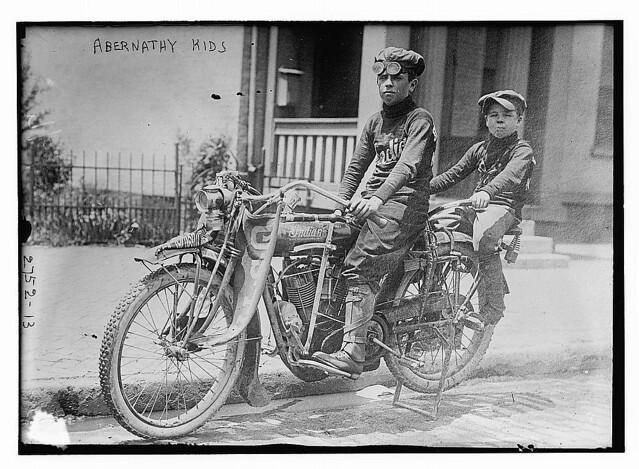
 Sometimes people save the most extraordinary things. But then the collector passes, and the object’s meaning or importance becomes hidden. When this happens, years may go by before context is restored. Archivists and librarians are constantly working to understand the materials they preserve and share, but sometimes, even a skilled researcher can use a helping hand.
Sometimes people save the most extraordinary things. But then the collector passes, and the object’s meaning or importance becomes hidden. When this happens, years may go by before context is restored. Archivists and librarians are constantly working to understand the materials they preserve and share, but sometimes, even a skilled researcher can use a helping hand.
Included in a collection given to us by Ms. Pit Dodson, were items owned by her great aunt, Mrs. Sadie McConnell of Houston. Among some very interesting ephemera (the subject of a future blog post) were three books written by Englishmen. Mrs. McConnell’s husband was English, so finding books from England was not surprising, but one title did have quite a story to tell. The volume was a pocket-sized book, dating from 1710 and entitled Twelve Sermons Formerly Preach’d by the Reverend Mr. John Cock, Vicar of St. Oswalds, Durham. To which is prefix’d, a short Preface by the Reverend Dr. George Hickes.
Twelve Sermons was a book given to members of the parish of St. Oswald’s in Durham, England by Rev. John Cock. The sermons were meant to be his dying legacy of instruction to them. According to the preface, only about 300 copies were printed. Should a family leave the Parish they were instructed to leave the book as an “Heirloom to the House, for the use of the next Family” and told that the book should “not be carry’d out of the Parish of St. Oswalds.” Obviously, something had happened to our copy, which had certainly left the parish!
Unable to find any other copies of Twelve Sermons online, and having learned only a little about John Cock, we decided to write St. Oswald’s to see what they could tell us. The parish office kindly forwarded our email to Beth Rainey, the secretary of the Parochial Church Council and a retired librarian formerly on the staff of Durham University Library’s department of Archives and Special Collections.
Ms. Rainey was wonderfully helpful, telling us:
“As you’ve discovered, it is a rare book, but Durham University Library has a copy…and I also know of copies in the Bodleian Library in Oxford and in York Minster Library….Like Hickes [who wrote the preface-awc], Cock was a Non-Juror, who was deprived of his living in 1690. He moved to London, but very generously maintained his interest in his St Oswald’s. He seems to have left most of his large and distinguished library behind in the vicarage here and eventually bequeathed it to the parish, where it remained until a vicar blithely sold it off without benefit of faculty in 1929. The sale had taken place before the church authorities woke up to what was happening, and the collection was very thoroughly dispersed…Cock also left money for a variety of charitable purposes in the parish, some of which still survive today.”
The 400 “non-juring clergy” in whom John Cock was included, lived at a very tumultuous time when schism split the Anglican Church after the Glorious Revolution of 1688. George Hickes, who wrote the preface to Twelve Sermons, was the last surviving non-juring bishop. A note by John Cock is recorded as follows:
“March 27, 1666 The vicaridge of St. Oswald’s was this day bestowed upon mee by the Dean & Chapter of the Cathedrall Church of Durham–A.D. 1691 I was deprived of it for not swearing allegiance to William & Maria , as king and Queen of England. Deo Gloria. Amen–John Cock.”
The bequest of which Ms. Rainey spoke, reads as follows
The Rev. John Cock, A.M. vicar of St. Oswald, by his will dated 27 May, 1701, bequeathed to certain trustees a sum of £600, to purchase freehold lands and tenements, and to pay the proceeds thereof to the minister and churchwardens, who are to distribute the same yearly in the following manner, viz. £2 10s. to be expended in purchasing bibles, common prayer-books, “˜Whole Duty of Man,’ “˜Explanation of the Creed,’ &c . for the poor inhabitants; £5 in phisic and other relief for the sick poor; £5 a year for clothes for poor widows and widowers, or other poor-house keepers, and £5 in money; £4 to teach indigent children to read, spin, knit, and sew; £6 for setting out yearly, one boy, being the son of an inhabitant;” and the surplus to be applied to similar charitable purposes.*
* A table of these charities is directed to be read by the minister in St. Oswald’s Church once a year.
It’s easy to look at an old book on someone’s shelf and think it’s “just another old book,” but this new arrival traveled a long and perilous path to get to The Texas Collection. As we retraced that journey we discovered that it had been touched by many hands: priests, parishioners, book dealers, collectors, and librarians. How fortunate for it to survive for three hundred years! How wonderful to know even part of its history.






